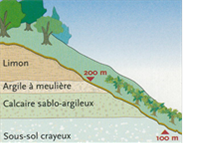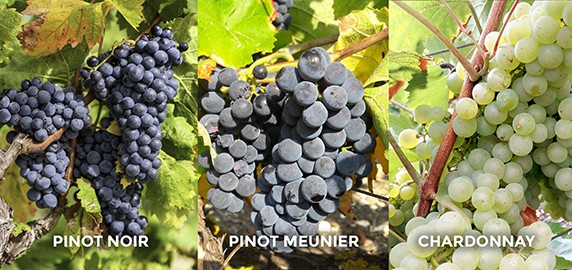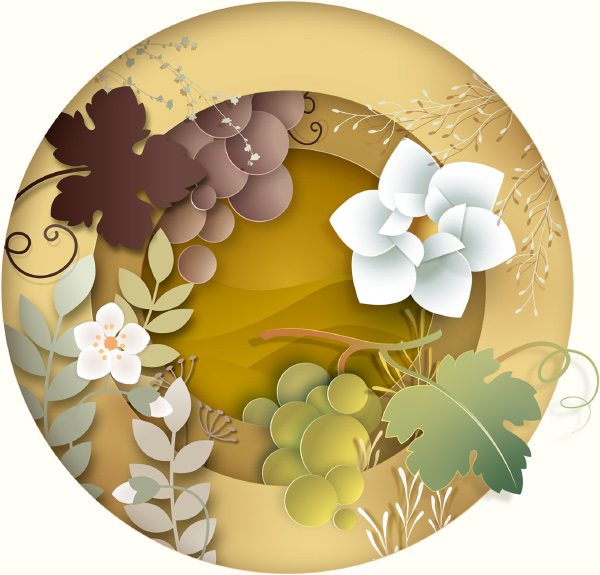Vignoble & Terroir
Notre champagne est le fruit d'un savoir-faire ancestral mais aussi de la typicité de la terre champenoise et de la sélection de cépages.
Le terroir

Le climat rigoureux de la campagne champenoise a une contrepartie fantastique, à savoir une maturation lente et régulière qui favorise la finesse des arômes ainsi qu’un excellent équilibre entre l’acidité et le sucre, gage de fraîcheur et de rondeur.
Plantée à flanc de coteaux, sur un sous-sol crayeux, la vigne bénéficie de 3 avantages :
-
Une exposition optimale au soleil
-
Un sol pauvre qui permet à la vigne de se concentrer sur la production de raisin plutôt que de bois.
-
Une régulation de l’apport d’eau grâce au sous-sol crayeux
Le cépage

Près de vingt siècles de culture de la vigne en Champagne ont permis de sélectionner les trois cépages suivants :
- LE PINOT NOIR :
On trouve ce raisin noir à jus blanc sur la Montagne de Reims et dans la Côte des Bars (Aube). Il apporte au vin, corps, puissance et longueur en bouche. Le champagne lui doit ses arômes de fruits rouges. Le Pinot Noir représente 37 % du vignoble champenois.
- LE PINOT MEUNIER :
Ce cépage vigoureux s'épanouit dans les sols riches de la Vallée de la Marne. Raisin noir à jus blanc, il confère aux vins leur fraîcheur et leur apporte des notes fruitées. le Pinot Meunier représente 37 % de l'encépagement du vignoble champenois.
- LE CHARDONNAY :
Ce cépage est présent sur la Côte des Blancs ainsi que dans le Sézannais. Synonyme d'élégance et de finesse, ce raisin blanc apporte au vin de délicats arômes de fleurs sauvages, d'agrumes et de fruits exotiques. Le Chardonnay représente 26 % du vignoble champenois.
L’appellation “Champagne” est strictement limitée à 35 000 hectares. Les vignobles champenois doivent leur richesse à un extraordinaire morcellement : avec plus de 300 villages ou « crus » et une mosaïque de petites parcelles, chaque cépage exprime différemment sa personnalité et apporte au vin de champagne une incroyable complexité.




